Having trained in Textiles and Fine Art, Judy Merchant is an artist who uses a combination of paint, gesso, fabric and machine stitch. She loves drawing from life but most of her work is abstract.
In this interview Judy tells us about her childhood and the family influences that helped her on the road to becoming an artist. We learn here about preferred materials and techniques and discover the route Judy took after having a family to get back to making and exhibiting art again full time.
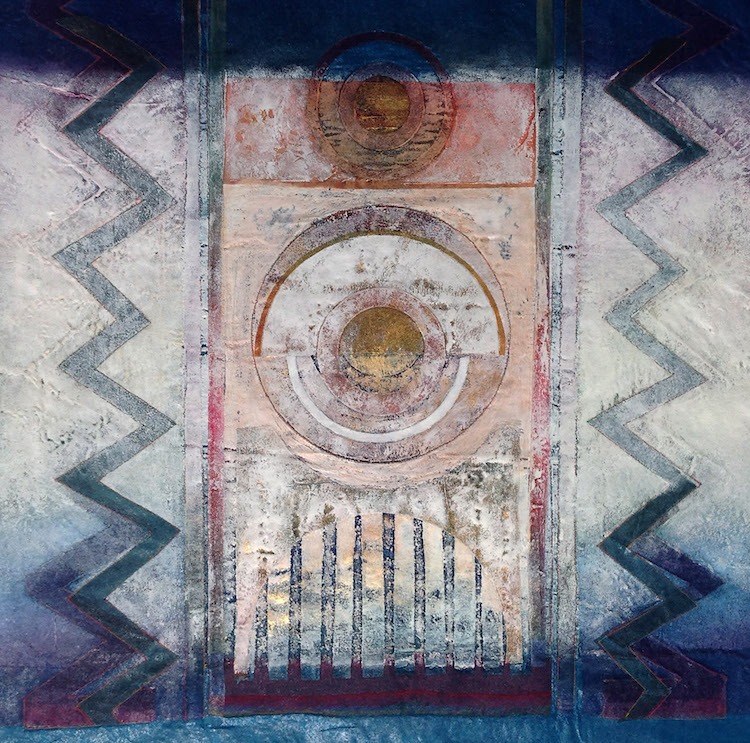
TextileArtist.org: What or who were your early influences and how has your life/upbringing influenced your work?
Judy Merchant: I suppose the first thing was that I was born into an artistic family. My father was an artist. He was an arts advisor to schools in Liverpool and set up the Art Teacher’s Diploma course at Reading University in the 50s.
When I was a child, he would take me to the University studios and I loved seeing the art work. It seemed like heaven to spend all of one’s time playing in a studio. The smell, the colours, the textures; everything about it was exciting.
My father was very interested in church architecture and wherever we went we would have to visit any church of interest. He loved brass rubbing and I remember being fascinated by the textures, the images and their sense of history. On these visits I noted all the beautiful patterns carved or painted in stone, wood or glass. I also loved any signs of aging… of the stone, the worn floor, the wooden furniture…all evidence of the passage of time which somehow gave it a sense of history and mystery.
I was brought up with a great appreciation of landscape, nature and the seasons. I remember my father giving me some oil paints when I was about nine and coming home from a family outing to paint the trees in their Autumn colours.
Inherited skills
My great uncle (on my father’s side) was Stanley Webb Davies, a furniture maker at the end of the Arts and Crafts movement. His work is displayed amongst other places in the V and A and at the Blackwell House in the Lakes. I remember visiting Stanley’s workshop and the excitement of seeing furniture being made and the wonderful smell of leather and wood. I also absorbed something of the philosophy of Stanley the craftsman who saw the importance of living with beautiful handmade furniture as opposed to mass produced machine made objects and of creating a harmonious and beautiful environment to live in.
My maternal grandmother trained as a tailor with Gieves and Hawkes in Portsmouth to make marine uniforms from the age of twelve. Later on she took in sewing and I was always interested in her equipment and what she was sewing. My mother inherited her skills, made clothes for us when we were young and taught me to sew and make things.
What was your route to becoming an artist?
As a child I was always drawing, painting or making things and I always wanted to go to Art School.
However, things didn’t quite go to plan because of family upheavals and in September when I was just 16 in the 1960s my father went to Canterbury College of Art to see if he could get me in. The only course I could get on at that point, because of my lack of qualifications, was Dress and Textiles and so, thinking that might lead to other things, I enrolled.
The course meant that I studied dress design, dress making, millinery (which I hated), colour, weaving, dying, printing and embroidery (City and Guilds). I learnt to appreciate the different qualities of a variety of natural and manmade materials and threads. I also learnt to design and make my own clothes and was taught by a Mrs. Rodwell, who only accepted perfectly straight and even stitching. (No short cuts!)
My favourite subject was embroidery where I learnt to design and think about composition and use beautifully coloured threads. At this point I discovered machine embroidery.
And, more specifically, how was your imagination captured by stitch?
I was asked by the Dress department to do some free machining on a house coat for the fashion show…and that was one of those eureka moments when I realized that’s what I wanted to do. I loved the freedom of being able to draw with the machine.
I also started going to a life class led by a very skilled artist in Margate called Chris Alexander who inspired and encouraged me to take my work seriously. He had a very strong influence on me.
I then realized I wanted to do a degree so then spent an amazing year on the Foundation Course at Canterbury College of Art, run by Chris Alexander and Eric Hurren, followed by Diploma in Art and Design.
Inspirational mentors
After the birth of my children, I started to teach art part-time. I took a Cert in FE to teach art which led me into art therapy and art teaching in a Mental Health setting. From here I went to train in Social work and eventually completed psychotherapy training and worked as a Principal Social worker in a hospice and later as a Crisis Centre counsellor.
Having to work fulltime meant little time for art work so in my mid 50s I went part-time at work and started to paint again and after a few years I left employed work altogether to concentrate on developing as an artist. I found a local textile centre where I could learn about and try out all the new materials and techniques available.
I met Julia Caprara who was very inspiring and affirming and she then became my mentor and invited me to exhibit with Prism in the Mall Gallery in London. A few years later I was selected for a course with Hilary Bower who mentored us individually over a year. At the end of that year we exhibited at Bankfield Textile Museum in Halifax.
Following the course, six of us carried on meeting as a peer support group and have since exhibited as the Reveal Group at a number of venues including Farfield Mill and the Knitting and stitching shows. I’ve also exhibited in Open studios in Leeds and other open arts exhibitions.
Tell us a bit about your chosen techniques.
My drawings usually involve pencil (graphite and colour), sometimes pastel and/or oil and turps.
In my textile work I like to work in layers using fabric and bondaweb which creates texture in the fabric. I sometimes cut and tear shapes and then add paint or gesso and stitch. I tend to use free stitching as mark making. A piece of work will go through many stages and layers before I decide to stop at the point of resolution. Most of my work is framed.
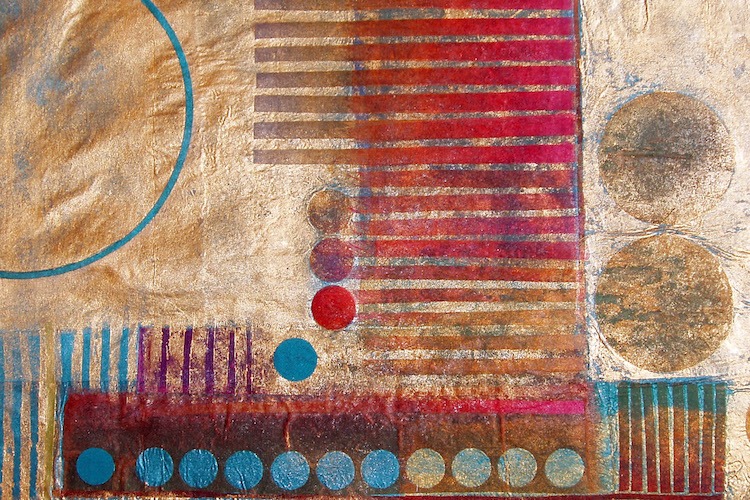
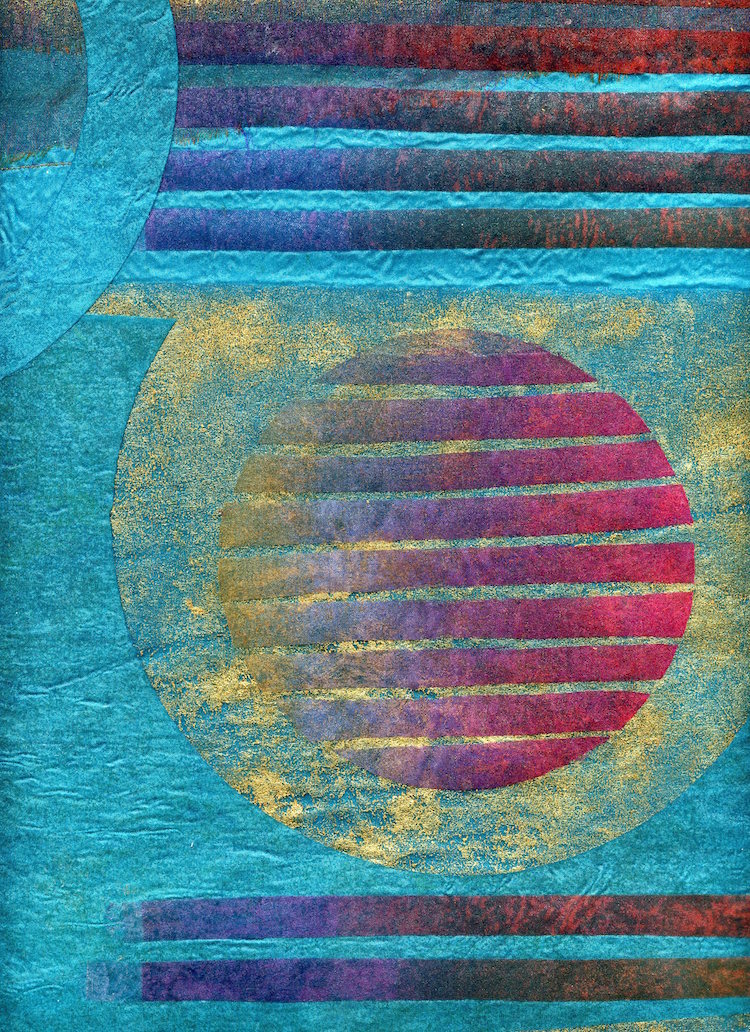
Do you use a sketchbook? If not, what preparatory work do you do?
I have always used sketch books for drawing which I see as an essential discipline: to draw what is in front of me, be it objects, plants, people or landscape, recording what I see. Immediately I start to draw I am choosing what to draw and how to describe it: what it says to me (what’s important and what isn’t). I choose whether to make use of the light or to use a line and if a line what kind of line? Energy is in the line; described by the width, direction and strength.
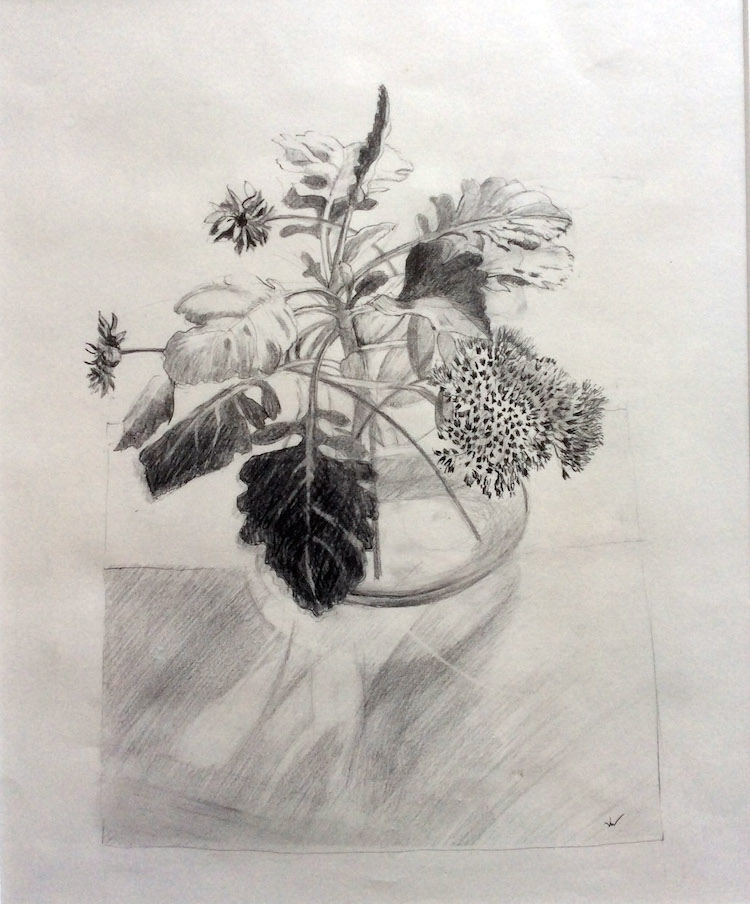
I have other sketch books for the purpose of collecting background work for current practice…to record ideas, colours, resources and samples of processes.
Peeling off layers, revealing something hidden
Tell us about your process from conception to conclusion.
My last body of work started with a commission.
The people who commissioned me knew where they wanted the piece to hang, which determined size and colourways. From a discussion with them it seemed that something organic, inspired by plant life and/or the cycle of seasons would suit them.
I started by making lots of drawings on small and large scale using different media (pencil, coloured pencils, water colour and oil pastels). As the drawings developed so did my ideas and I started to think about and try out different fabrics. I tried out several samples with different colourways and fabrics.
I then loosely drew with chalk onto the chosen fabric keeping in mind design, balance and composition and started the layering process of stitch and paint.
I usually work on several pieces at the same time as ideas from one will trigger ideas for another. The process never runs smoothly and often becomes very challenging.
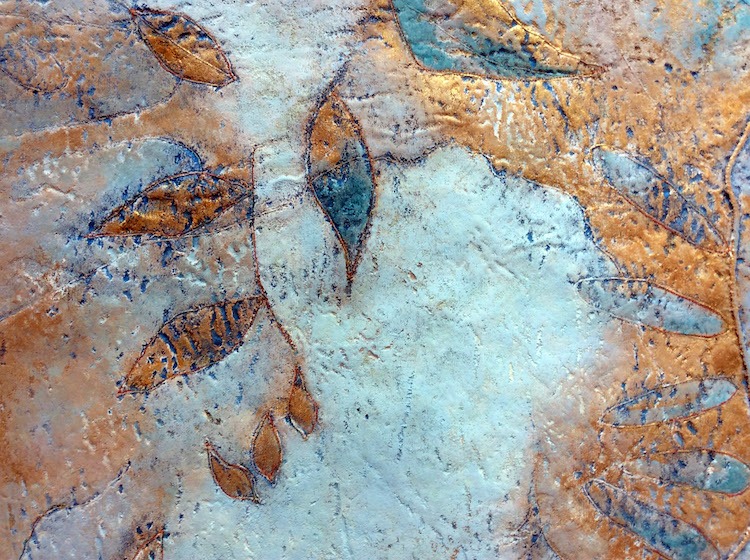
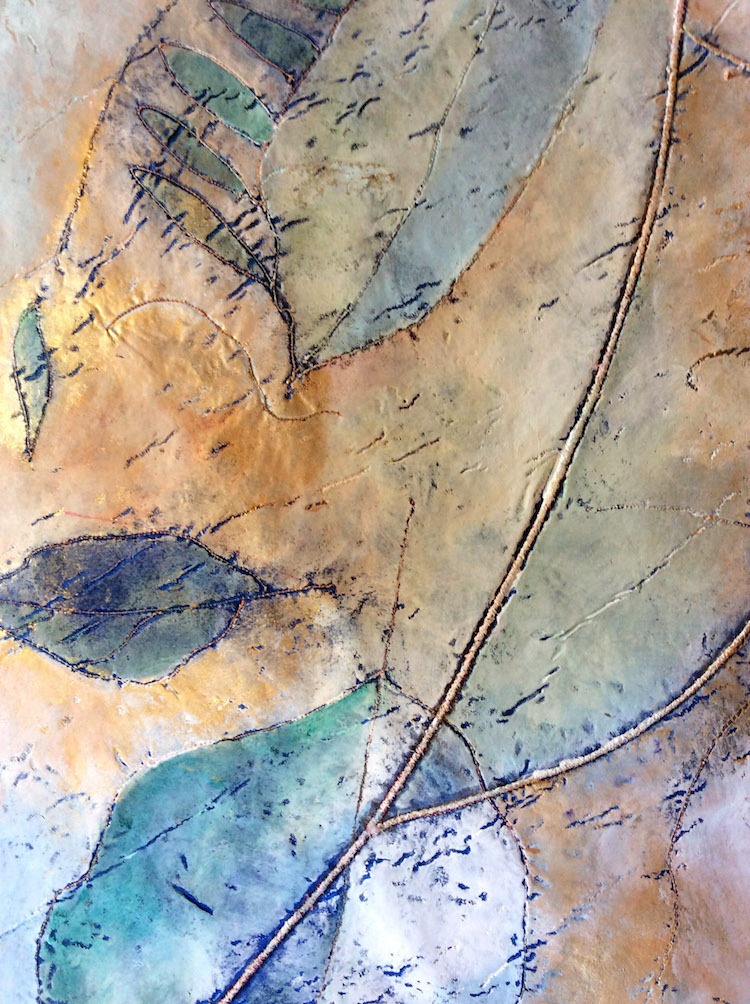
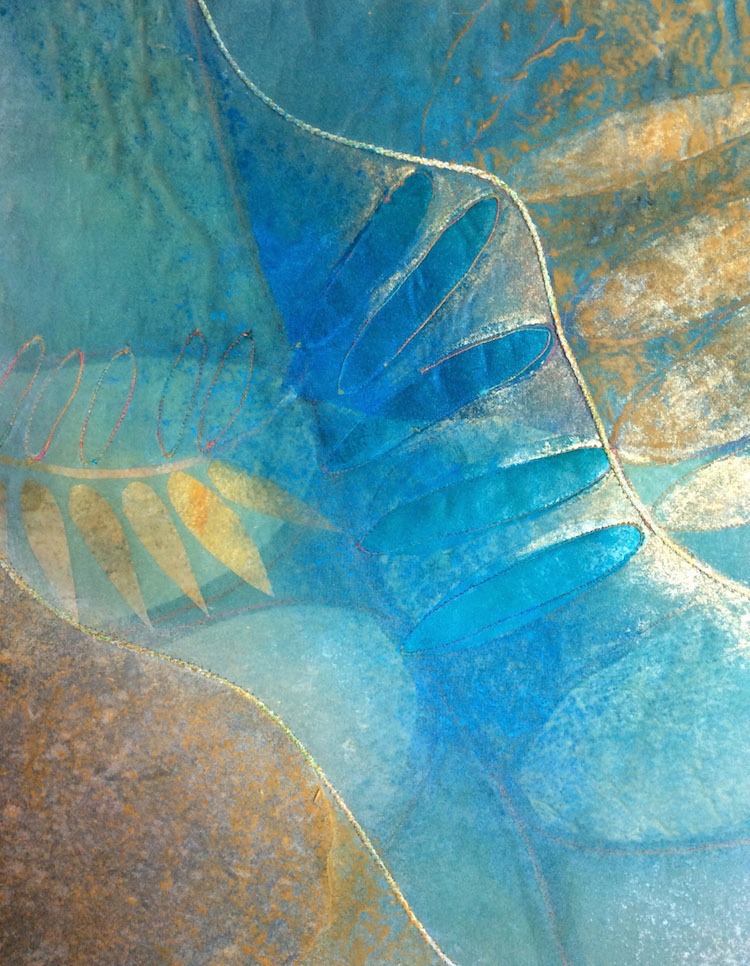
I see the process as a dialogue between myself and the materials which involves piecing things together, balancing things layer on layer, cutting back, hiding and exposing and constantly making decisions about what to keep and what to discard until something is resolved and it feels right to stop. I see a parallel between my art work and my therapy work where one is encouraging reflection, exploring the past by peeling off layers, revealing something hidden, making connections, giving meaning and creating something new.
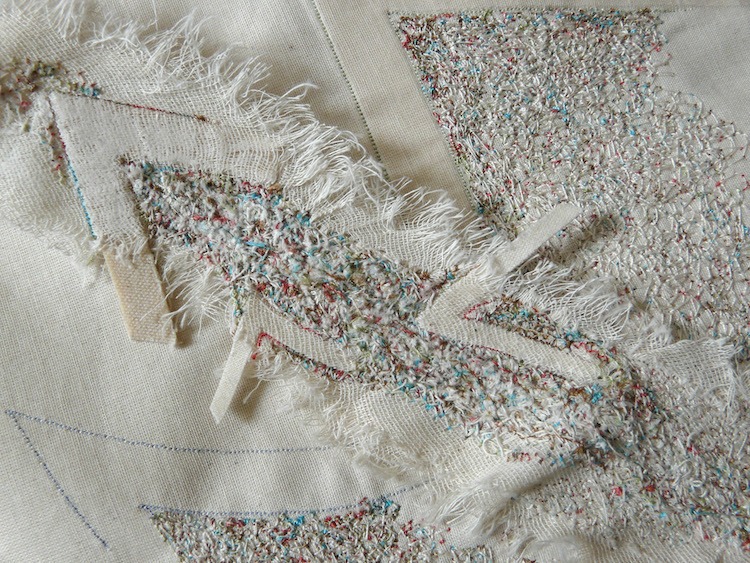
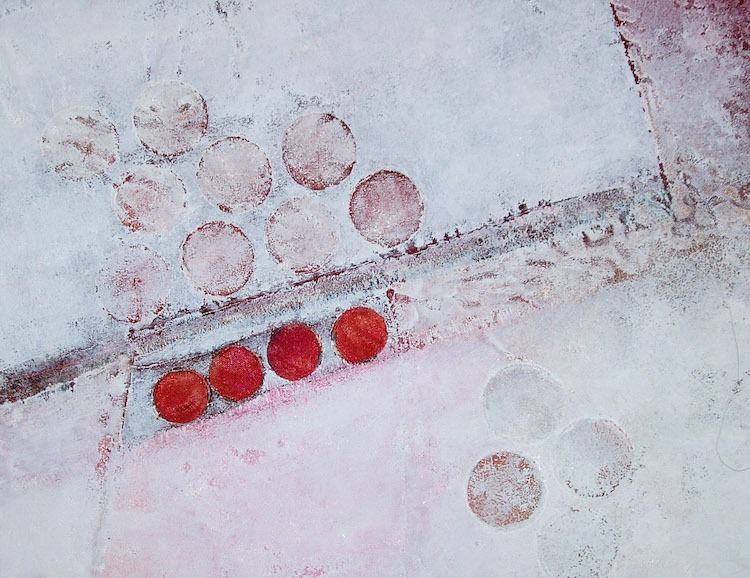
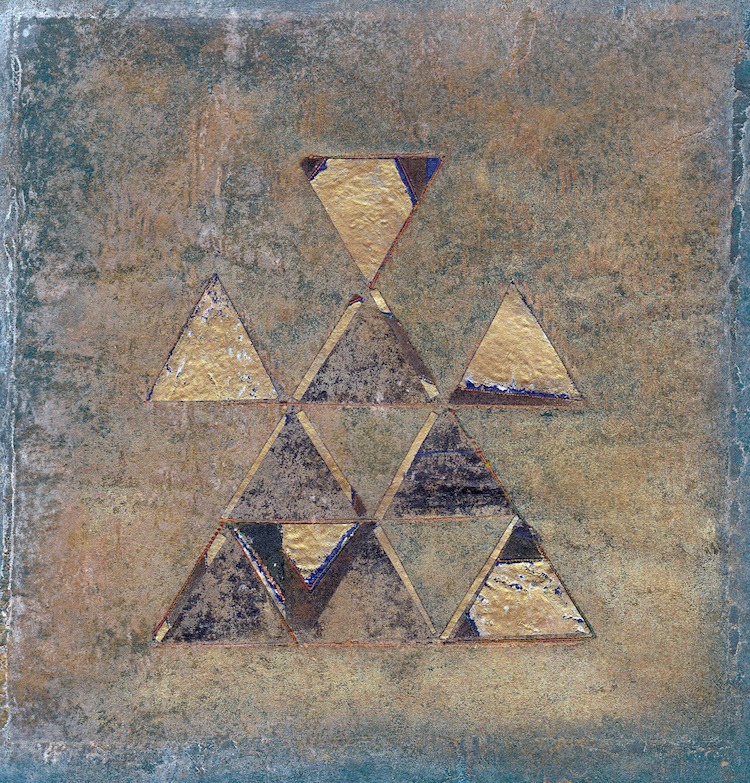
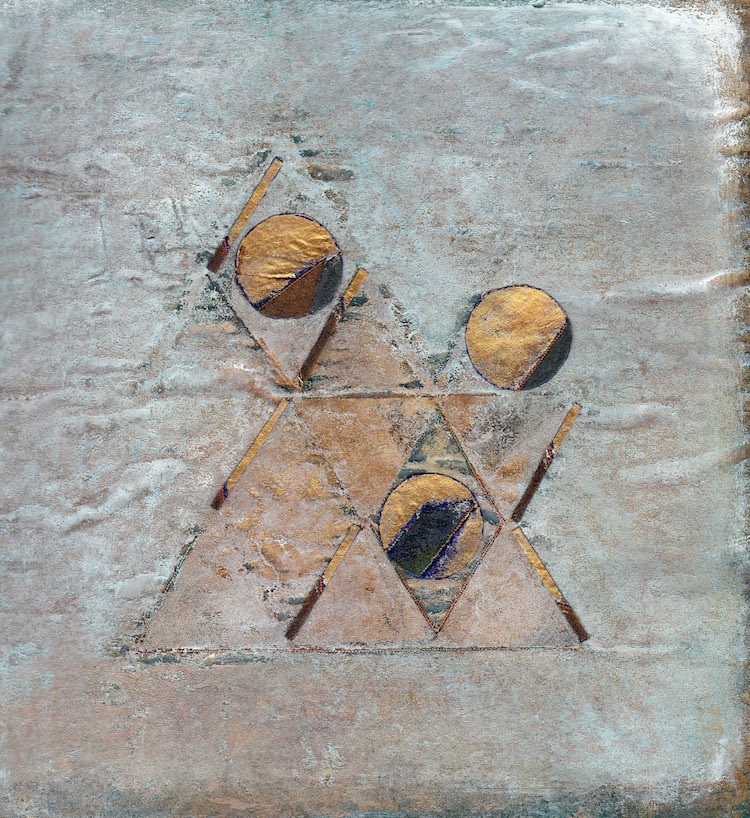
The past playing a part in the new
What environment do you like to work in?
I have a studio at the top of my house which faces north west. There is a velux window over my work table so the room is light and warm and I work with a continual flow of background music (e.g. Bach, Cold Play, Jazz, Bob Dylan, Benjamin St. Clements)
I have all my tools including my Bernina 1008 , embellisher, hot air gun, soldering iron, a whole range of paper, paints and bags of materials around me.
What currently inspires you?
My inspiration comes from what I observe around me (plantlife, the leaves under my feet on a wet day, aging architecture, natural geology, the silhouette of a tree against the sky, light on the water, beautiful artefacts, a decaying door).
I am often inspired by my last piece of work and so the work evolves from one piece to another.
I am drawn to Wabi-sabi which is about paring things down to the barest essence and finding beauty in imperfection and profundity in nature, of accepting the natural cycle of growth, decay and death.
I also like the idea of a palimpsest which, for example, might be an object made or worked upon for one purpose and later reused for another. The previous markings, although partly obliterated, may become integral to the composition of a new piece, the past playing a part in the new.
Who have been your major influences and why?
I think I have been influenced by many different artists and movements. My early influences were Leonardo da Vinci and Daumier for their beautifully observed drawings of the human figure, Turner for his beautiful almost abstract landscapes and then the Impressionists (Monet, Degas and Matisse) with their use of colour and often abstracted composition. I also love Abstract expressionists for their freedom of mark and colour (Jackson Pollock, Franz Kline and Mark Rothko for his beautiful mesmerizing colour.) I could go on forever…so many artists have inspired me.
Tell us about a piece of your work that holds particularly fond memories and why?
As I returned to my art work in my 50s I joined a weekend course run by Julia and Alex Caprara (both inspiring teachers) in York. We were set tasks of walking round York spotting and recording anything of interest. We then used these as a basis for a piece of work. I choose this piece because it reignited my excitement and enthusiasm for working with fabric and paint.
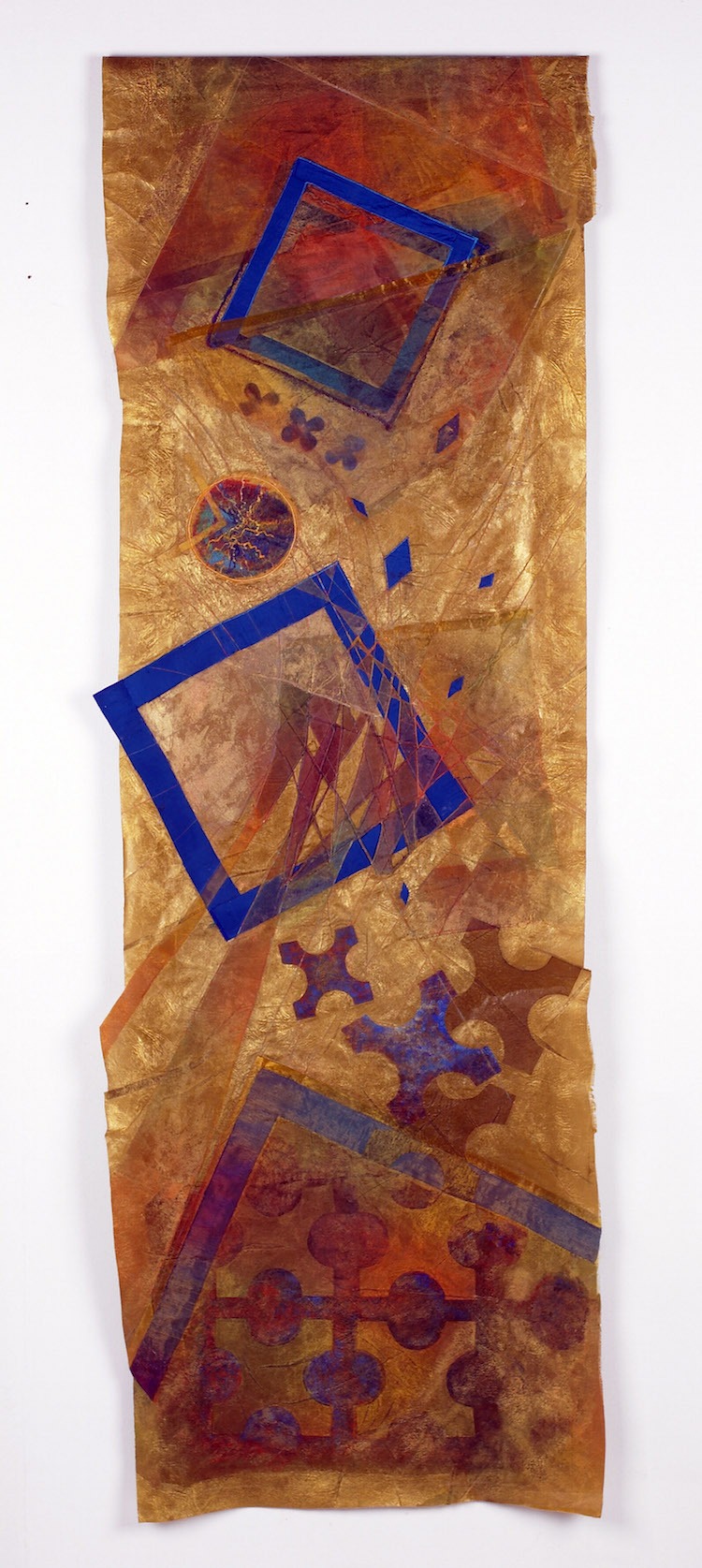
Can you recommend 3 or 4 books for textile artists?
When I started doing textile work again I made great use of the Batsford books including Layers of Stitch (Val Campbell-Harding and Maggie Grey), Creating sketchbooks (Kay Greenlees), and Surfaces for stitch (Gwen Hedley) to learn about the range of materials and techniques available now.
Nowadays however I use a whole range of books and magazines about any aspect of art from individual artists (e.g. painters, ceramicists, sculptors) to books about art from other countries (African, Islamic and religious). Basically I use anything that can inspire me or spark an idea.
What other resources do you use? Blogs, websites, magazines etc.
I subscribe to Embroidery, Crafts, Elle Decoration and sometimes Craft and Design and I have some favourite blogs and websites (e.g. Art Propelled, Sketch for a day). I also keep an eye on Pinterest, Tumblr, Flikr and Instagram.
Do you give talks or run workshops or classes? If so where can readers find information about these?
I don’t currently run workshops or classes. I prefer to spend my time in the studio.
Where can readers see your work this year?
I’m currently in the process of negotiating an exhibition in Leeds and will keep my website up to date with news on any exhibitions planned.
For more information visit: www.judymerchant.com
Got something to say about the techniques, materials and processes used by this artist – let us know by leaving a comment below.
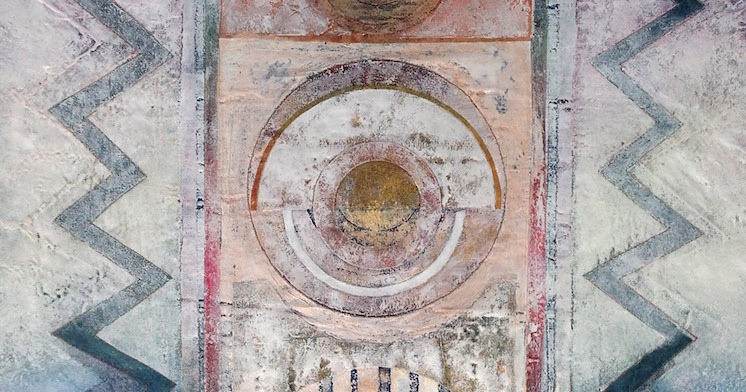

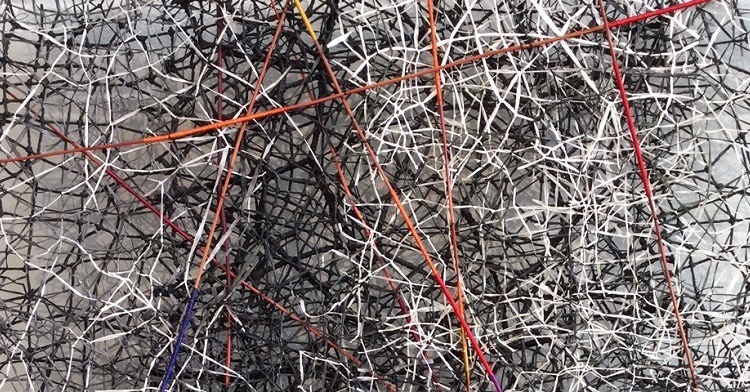
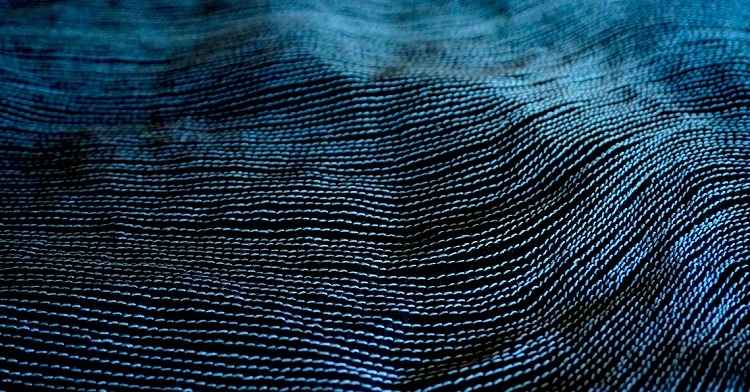
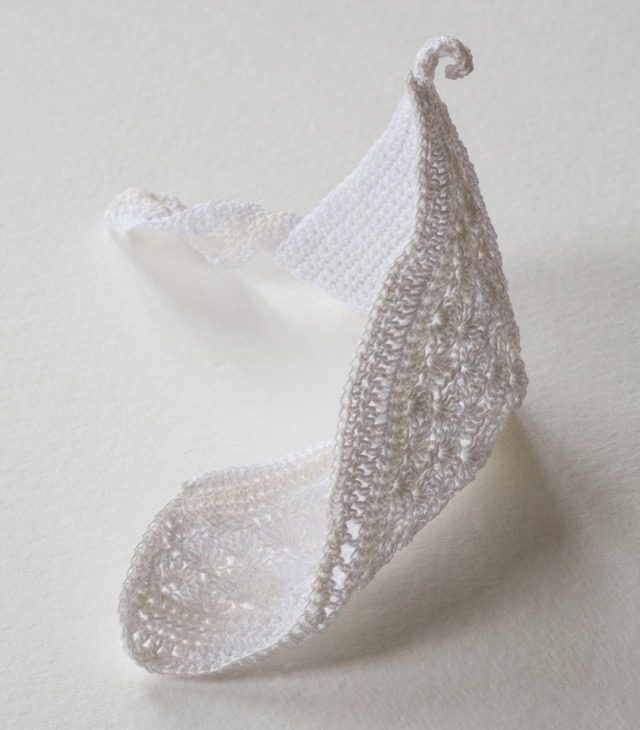
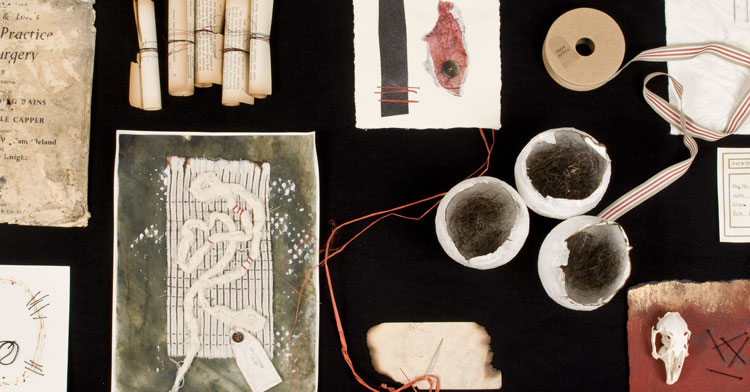
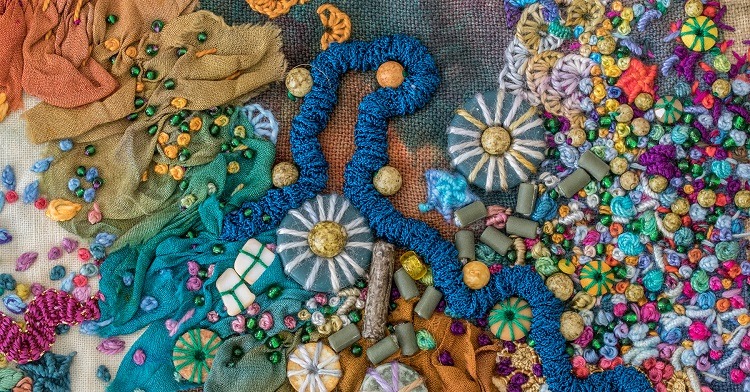
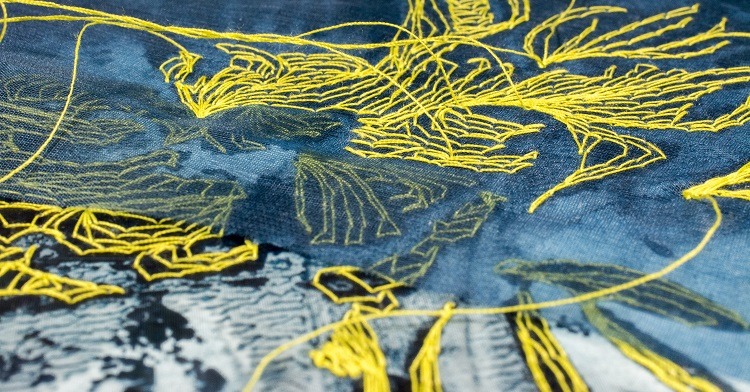
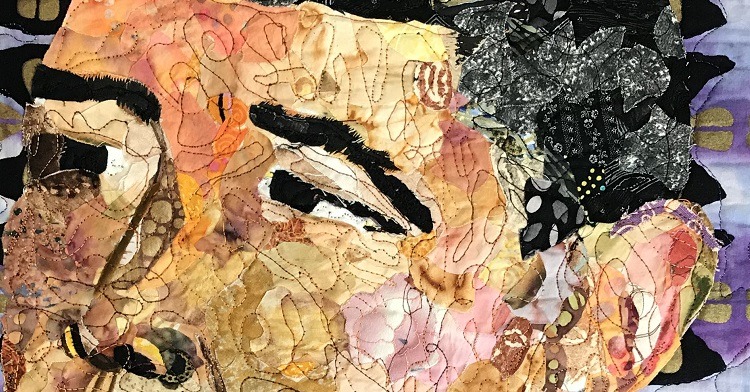
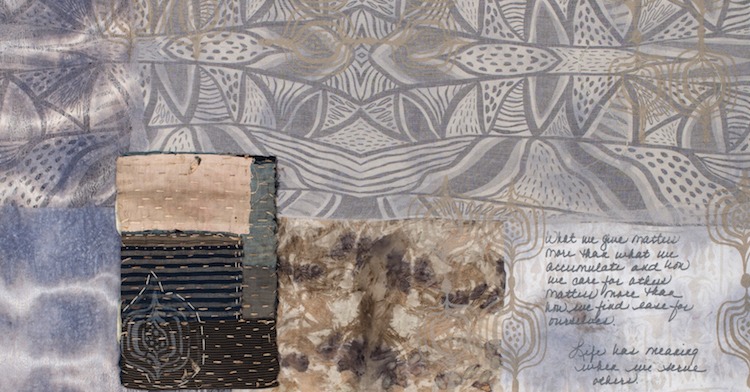
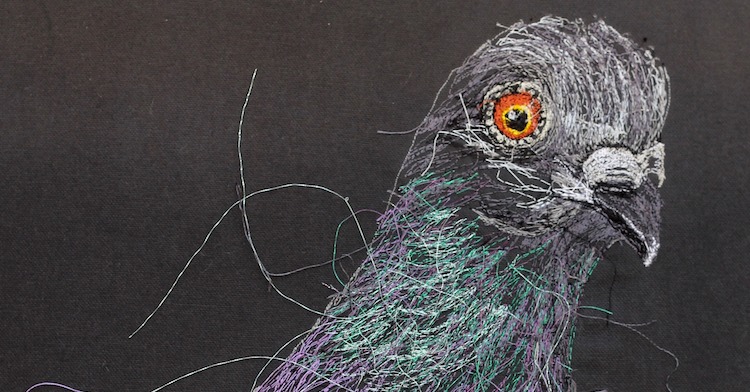
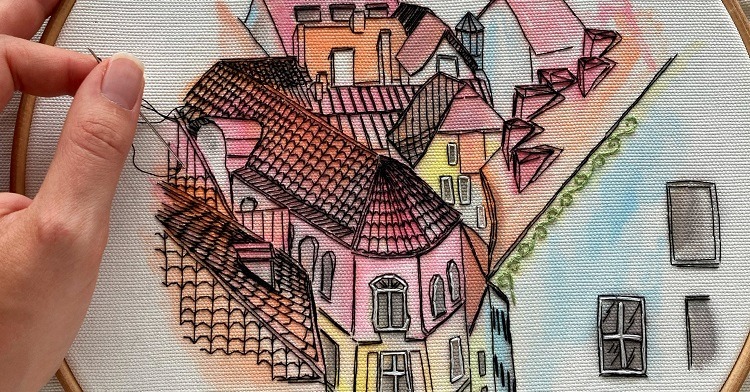
10 comments
Judy
and thank you for your wonderful comments…….enjoy your journey
Lauraine
I’ve wished for a long time to make “some kind of” art with fabric but couldn’t find a starting point. I’m so happy to see this article because your work really resonates with me, as it integrates things I feel deeply — color, pattern, nature, decay. Previously those things felt like disparate attractions to me. I love how you’ve captured them. Your tracing of your journey and processes has given me so many ideas for beginning.
Thank you, thank you for sharing.
Thank you for your wonderful art.
Judy Merchant
Thank you. Yes the Bernina 1008 is a great machine because it is so robust and will stitch through more or less anything!
Ellen Cunningham
I love your use of the abstraction of stitch-I do envy your Bernina-great machine! Lovely subtle use of colour too, and the feel of layering, either in stitch or fabric is so good. “Draw ing in reverse ” from the point of your sewing machine needle is such a great way of working and can lead to such lovely things.
Sherron Pampalone
Breathtakingly gorgeous pieces. Reading your story, I am even more motivated! I too work on a piece until I “feel” it is finished. Thank you for your inspirations!
Judy Merchant
Thank you for your comments….I think much of what I do comes from a gut feeling but this is informed by my skills and what I have learnt
Margaret Hynds-Ryman
I enjoy painting and stitching too but tend to get ‘lost’ somewhere along the way. Your use of complementary colours in ‘plant life’ is very good and very peaceful. I use a sketch book too, but hadn’t thought of using a few relating to different aspects of my work. Thank you for showing me your work and telling me about yourself.
Judy Merchant
Thank you..Margaret. Use of complementary colours, even used in tiny amounts,
can bring a piece to life
mirjam Bruck -Cohen
I can `connect ` with many of your ideas. When i embroider applique a new creation , i enjoy working on cloth that has some `History`, like faded printing faults., or rust stains. It makes my creation more private more me.
mirjam
Judy Merchant
Thank you……yes I like the idea of a palimpsest …that an object made or worked upon for one purpose can later be used for another…..something is covered up but becomes part of the new piece.